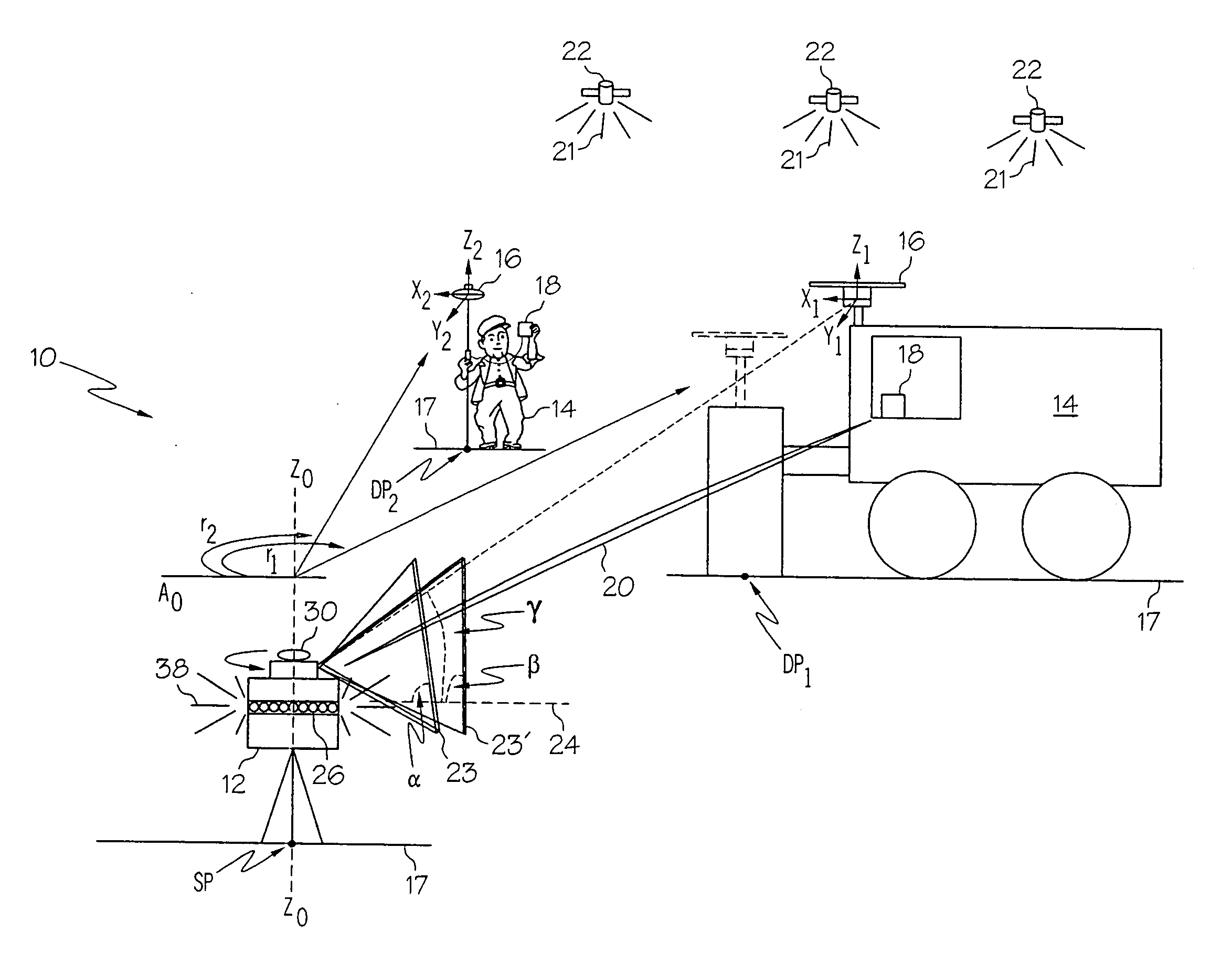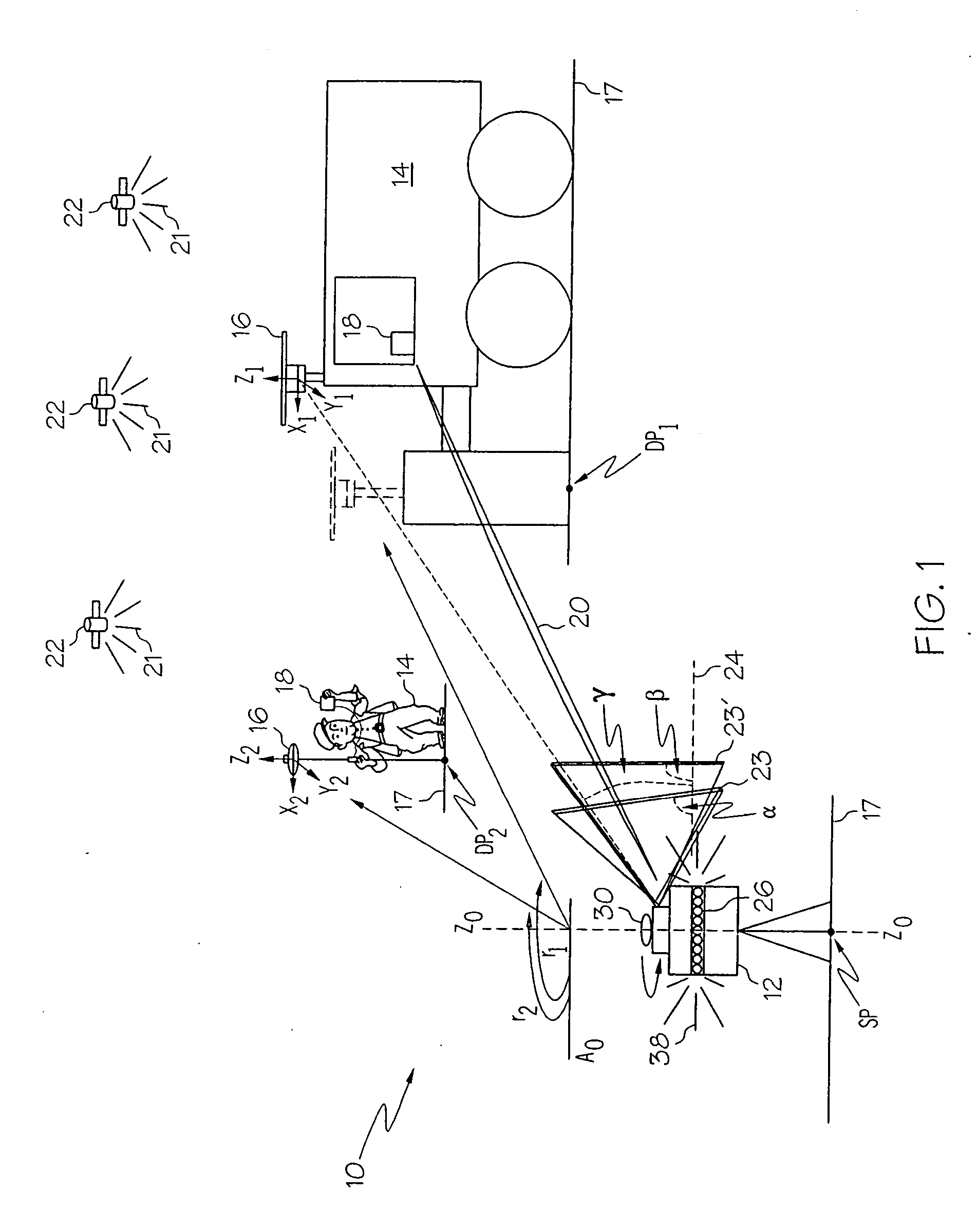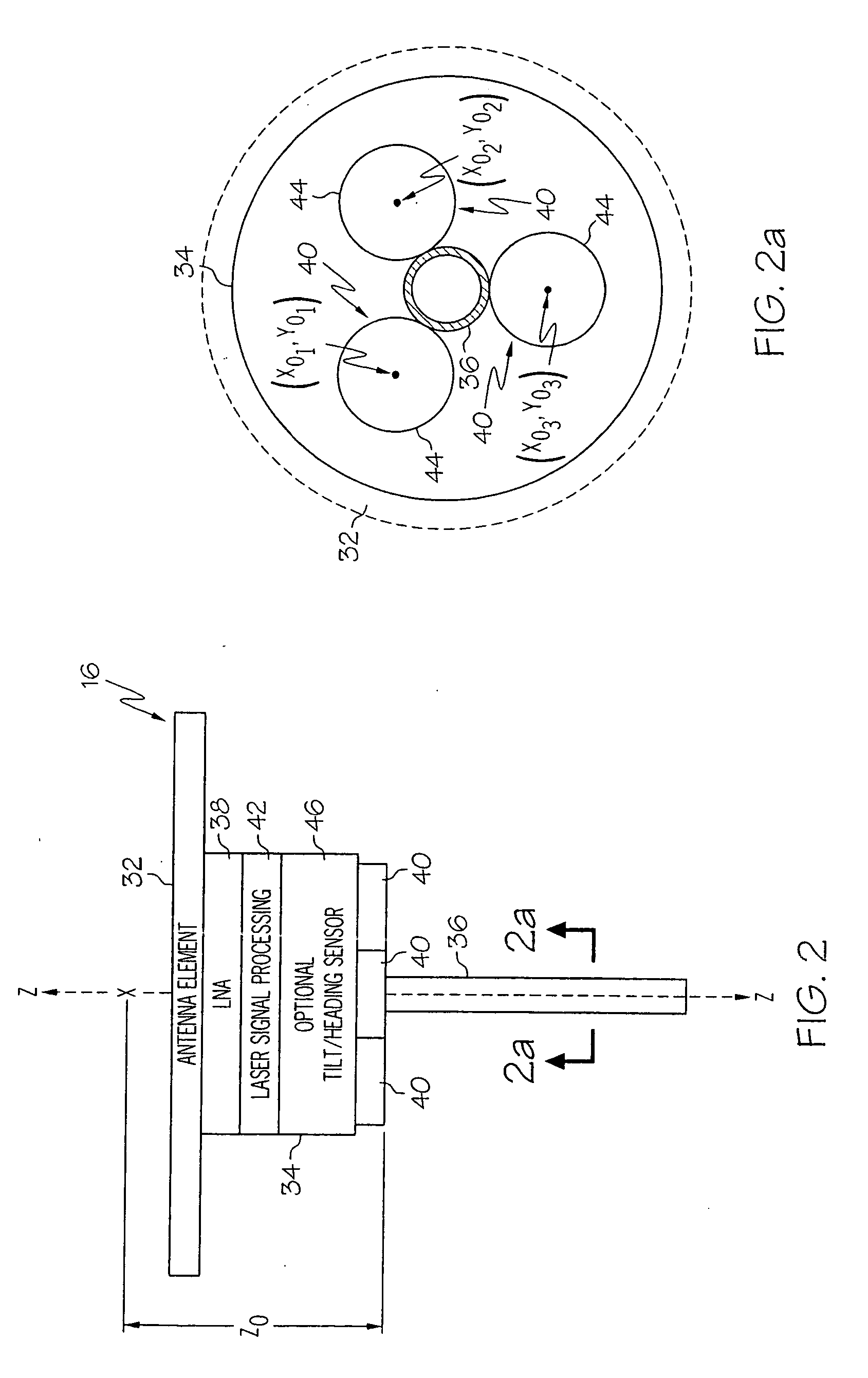Navigation system using both GPS and laser reference
a technology of laser reference and navigation system, which is applied in the direction of reference lines/planes/sectors, using reradiation, instruments, etc., can solve the problems of significant loss of satellite reception, slow down the operation of the positioning system, and lose sight of a number of satellites, so as to improve the accuracy of positioning system operation, improve the accuracy of positioning system, and improve the effect of positioning system operation
- Summary
- Abstract
- Description
- Claims
- Application Information
AI Technical Summary
Benefits of technology
Problems solved by technology
Method used
Image
Examples
Embodiment Construction
[0016] The present invention can be best understood by reference to FIG. 1 which depicts a position tracking and control (PTC) system 10. The PTC system 10 comprises a laser transmitter system 12, one or more mobile or rover units 14, each having a combination laser detector and global navigation satellite (CLDGNS) antenna 16 and an associated control system 18, and having a transmitter for establishing a communication link 20, preferably a radio link. Signals 21 from a plurality of global navigation satellites 22 orbiting the earth, such as GPS, GLONASS, GALILEO, and combinations thereof, are received by the CLDGNS antenna 16 so that the coordinates of dynamic points in a plot of land 17, such as points indicated as DP1, and DP2, can be determined to a centimeter level of accuracy by the control system 18. Control system 18 includes a microprocessor or other computing hardware configured to process data from the antenna 16 to provide an estimate of the position of the antenna 16.
[...
PUM
 Login to View More
Login to View More Abstract
Description
Claims
Application Information
 Login to View More
Login to View More - R&D
- Intellectual Property
- Life Sciences
- Materials
- Tech Scout
- Unparalleled Data Quality
- Higher Quality Content
- 60% Fewer Hallucinations
Browse by: Latest US Patents, China's latest patents, Technical Efficacy Thesaurus, Application Domain, Technology Topic, Popular Technical Reports.
© 2025 PatSnap. All rights reserved.Legal|Privacy policy|Modern Slavery Act Transparency Statement|Sitemap|About US| Contact US: help@patsnap.com



